The following code will generate good-looking regression plot for you. My comments along the code should explain everything clear. The code will use value, model as in your question.
## all date you are interested in, 4 years with observations, 10 years for prediction
all_date <- seq(as.Date("2012-12-31"), by="1 year", length.out = 14)
## compute confidence bands (for all data)
pred.c <- predict(model, data.frame(date=all_date), interval="confidence")
## compute prediction bands (for new data only)
pred.p <- predict(model, data.frame(date=all_date[5:14]), interval="prediction")
## set up regression plot (plot nothing here; only set up range, axis)
ylim <- range(range(pred.c[,-1]), range(pred.p[,-1]))
plot(1:nrow(pred.c), numeric(nrow(pred.c)), col = "white", ylim = ylim,
xaxt = "n", xlab = "Date", ylab = "prediction",
main = "Regression Plot")
axis(1, at = 1:nrow(pred.c), labels = all_date)
## shade 95%-level confidence region
polygon(c(1:nrow(pred.c),nrow(pred.c):1), c(pred.c[, 2], rev(pred.c[, 3])),
col = "grey", border = NA)
## plot fitted values / lines
lines(1:nrow(pred.c), pred.c[, 1], lwd = 2, col = 4)
## add 95%-level confidence bands
lines(1:nrow(pred.c), pred.c[, 2], col = 2, lty = 2, lwd = 2)
lines(1:nrow(pred.c), pred.c[, 3], col = 2, lty = 2, lwd = 2)
## add 95%-level prediction bands
lines(4 + 1:nrow(pred.p), pred.p[, 2], col = 3, lty = 3, lwd = 2)
lines(4 + 1:nrow(pred.p), pred.p[, 3], col = 3, lty = 3, lwd = 2)
## add original observations on the plot
points(1:4, rev(value), pch = 20)
## finally, we add legend
legend(x = "topleft", legend = c("Obs", "Fitted", "95%-CI", "95%-PI"),
pch = c(20, NA, NA, NA), lty = c(NA, 1, 2, 3), col = c(1, 4, 2, 3),
text.col = c(1, 4, 2, 3), bty = "n")

The JPEG is generated by code:
jpeg("regression.jpeg", height = 500, width = 600, quality = 100)
## the above code
dev.off()
## check your working directory for this JPEG
## use code getwd() to see this director if you don't know
As you can see from the plot,
- Confidence band grows wider as you try to make prediction further away from you observed data;
- Prediction interval is wider than confidence interval.
If you want to know more about how predict.lm() computes confidence / prediction intervals internally, read How does predict.lm() compute confidence interval and prediction interval?, and my answer there.
Thanks to Alex's demonstration of simple use of visreg package; but I still prefer to using R base.

